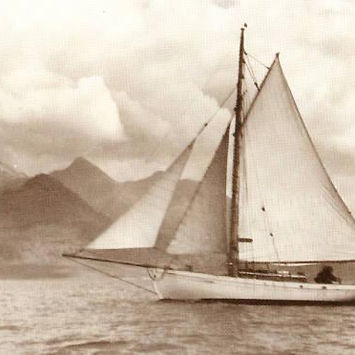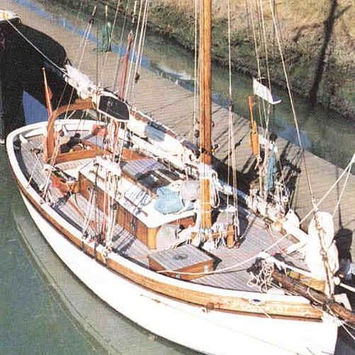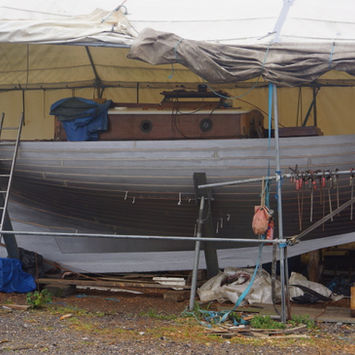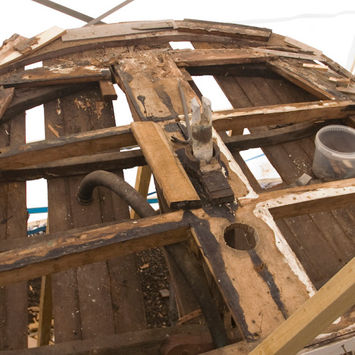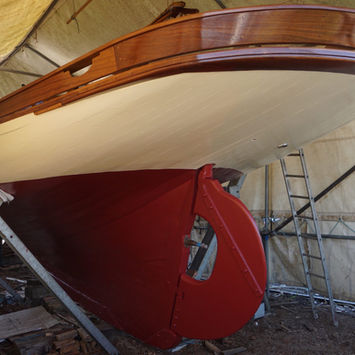Mai - Juin
1940
The Association of Dunkirk Little Ships

A D L S

CACHALOT
Tell your visitors your story. Add catchy text to describe what you do, and what you have to offer. The right words can inspire and intrigue your audience, so they’re ready to take action on your site. To start telling your story, double click or click Edit Text.

Type: Gaff Cutter
Length: 30ft with 10FT Bowsprit)
Beam: 9ft 10ins
Draft: 4ft 3in
Displacement: 6.8 tons
Engine: Yanmar 16hp Diesel
Construction: Carvel
Builder: R Sanders, Folkstone
Year: 1898
HISTORY
Her skipper at Dunkirk was a civilian called Spurling. After the war she was variously owned by two stockbrokers, a parson and a Brigadier and cruised extensively round Britain, the Baltic, the Red Sea and the Mediterranean with many fast passages to her credit. But, as the years went on, she fell on hard times and successive owners, in the name of modernisation, removed first her beautiful interior teak panelling, then her brass cabin lamps, copper running lights and unique square compass of which the only other example can be seen in the Science Museum. But, as often happens with boats, she has once more struck lucky in her present owners, Ian and Jen Kiloh, who are painstakingly re-fitting her as closely as they can to her original, beautiful state.
This vessel is one featured individually on a series of stamps called 'Little Ships of Dunkirk'. These were issued in Palau in 2015 to commemorate the 75th anniversary of Operation Dynamo.
On 4 August, 2017, the gaff cutter ‘Cachalot’ emerged from her tent on the banks of the River Deben at the Tidemill Yacht Harbour, Woodbridge, Suffolk after a ten year restoration undertaken by her current owner, Steve Yates.
Built in Folkestone, Kent, 1898 ‘Cachalot’ has an interesting history of illustrious owners interspersed with periods of neglect. Having spent most of her life on the English East Coast, previous owners have sailed her in the western isles of Scotland as well as the Mediterranean.
It is unclear who her owner was when she took part in the Dunkirk evacuation ‘Operation Dynamo’ but we know she had a Stuart Turner 2 cylinder, 6hp auxiliary petrol engine installed in 1934. ’Cachalot’ joined the ADLS ‘Return to Dunkirk’ in 1990 and there is a fine photograph by Tom Cunliffe of her with triced mainsail. In 2009 she received a restoration award from the Transport Trust.
Steve had fallen in love with her elliptical counter stern when he first saw her, for sale via a broker, at The Suffolk Yacht Harbour, Levington, Suffolk in 2005. After a year sailing on the East Coast and planning a programme of winter maintenance, she almost sank at her berth in January 2006.
Following a careful inspection rot was discovered in the arch board and beam shelf. She had also suffered from too much re-fastening of the planks over the years. It was clear that she needed more than just a programme of re-caulking and was declared a project in May 2007.
It turned out to be an extensive project that included a new ply deck, 90% new planking in larch, new sternpost, stem, rudder, bulwarks and replacement or sistering of most of her frames. Her bowsprit, featured in Tom Cunliffe’s book ‘Hand, Reef and Steer’ (first edition) flying her St George’s cross during the 1990 ‘Return’, has also been replaced. At launch, the old bowsprit was used as a temporary mast to allow her to be dressed overall.
Her Yanmar engine has been reconditioned and some of the old reclaimed teak deck has been used to make new boards for the sole and cockpit. She has a new suit of Ratsey & Lapthorn sails and fit out of the interior is being undertaken in stages, nearing completion in 2022.
Many details of her history and a full record of the restoration are available on her website: www.cachalot.org.uk


